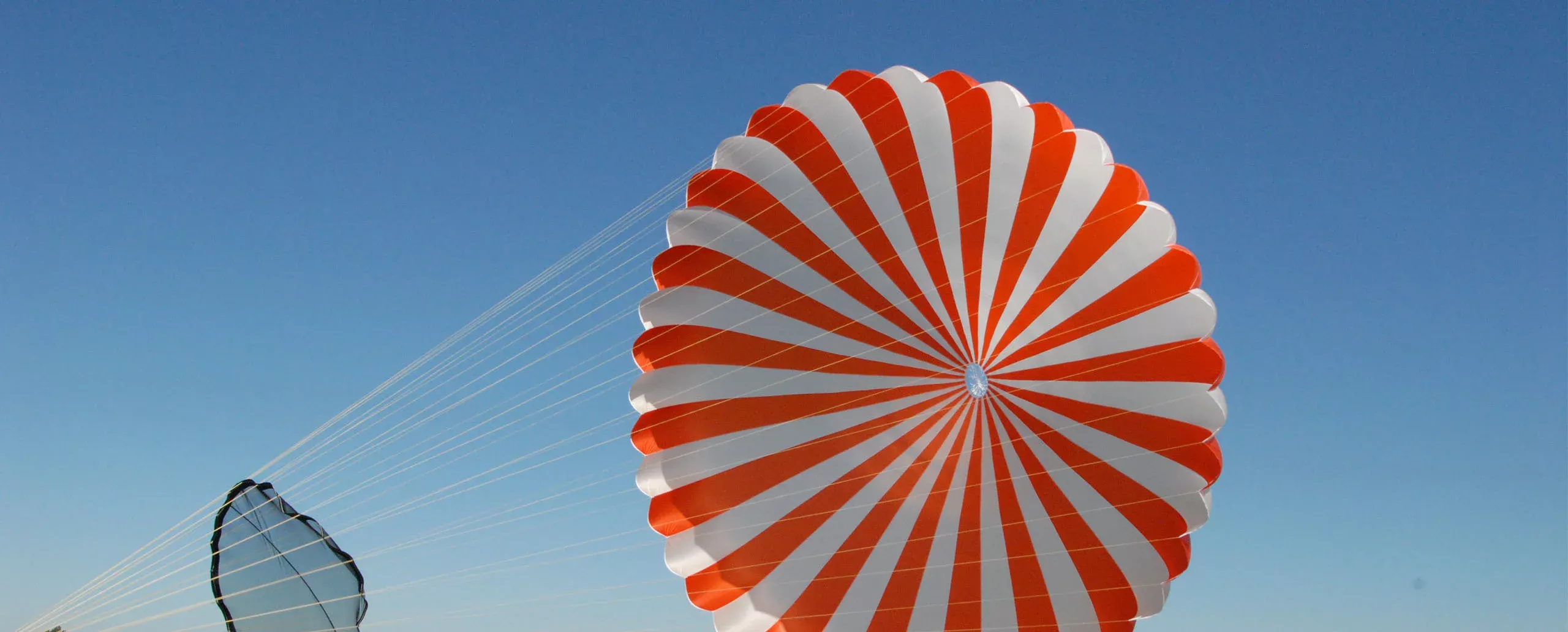MAGNUM Rescue Parachute Systems
Information for fire fighters and rescue personnel
Rescuers who come to an aircraft accident scene are exposed to the possible activation of the rescue parachute system which has not been deployed. Although intended for life saving, the rescue parachute system may cause serious injury to fire fighters, rescuers, and bystanders when this rocket-powered system becomes damaged and is not activated following an accident. It is therefore necessary to observe the following instructions.
1) First, with caution, look for and find parts of the rescue system, if possible.
The rescue parachute system is composed of the following basic components: a parachute set in a metal or laminate container or a softpack - a fabric container, a rocket motor in a rocket pod(housing), an activation handle, and an activation Bowden cable. Familiarize yourself with the pictures below to help you locate it.
Activation handles
The first thing to find by the rescuers would be the activation handle located in the cockpit, close to a pilot. The Magnum rescue system is equipped with different types of activation handles:
Activation handles portrayed in the above picture (No.1,2,3,4,5) are secured by a safety pin called a "quick pin". The quick pin is intended to secure the rescue system against an accidental activation and has to be removed by the pilot before flight. Therefore, the rescuer needs to insert some type of a pin or a thin wire in place of the Quick Pin and thus secure the activation handle.
The activation handle is connected with an activation Bowden cable, which is connected to the rocket motor activation device.
Bowden cable types
Keep in mind that pulling the Bowden cable can activate the rocket booster! Be careful especially when the activation Bowden cable appears to be tight, damaged or deformed in consequence of the aircraft damage!!!
The parachute of the rescue system is stored in a container.
The container can be made of cloth (softpack).
The rescue parachute system can be found in different places around the aircraft. A metallic (Dural alloy) container is usually installed on the outer side of the aircraft and is therefore visible from outside. The softpack is always installed inside the aircraft and is covered by the aircraft fabric:
The rescue parachute system contains a rocket booster placed in a rocket pod (rocket housing). During the system activation, the rocket booster goes off the rocket pod (rocket housing). The rocket booster is placed in the proximity of the parachute.
2) Identify the rocket pod (rocket housing) with the rocket booster.
If the aircraft has been badly damaged, the rocket booster may have self-activated. This can be recognized by the parachute being pulled out of the container or by the rocket booster being missing from the rocket pad. In such an instance, the rocket booster has already been destroyed and poses no danger. There may also be a situation, when the rocket didn´t burn. So if the rocket is in the flames, it can be activated by heat.
Otherwise, the following rules must be observed: No one should be positioned in front of or be standing in the direction of the rocket launch system! Step 50 meters back, if possible. Keep in mind that parts of the damaged aircraft could have damaged the rescue parachute system which could initialize the activation!
3) Disconnect the activation Bowden cable.
Localize the point where the Bowden cable is connected to the rocket booster. Use wire or cable cutters and carefully separate the rocket booster and rocket pad from the Bowden cable closely behind that point.
As soon as the rocket booster is separated it becomes relatively harmless.
Due to the risk of injury or death from an accidental activation, no one is allowed to stand or position himself or herself in front of the rocket booster during deactivation of the rescue system!
4) Transport and place the rocket booster away to a secure location and contact Stratos07.
Transport and place the rocket booster away to a secure location and contact Stratos07 for further instructions on how to dispose of the rocket booster safely and how to proceed further.
Contact phone numbers: +420 603 416 872, +420 603 451 819, +420 312 658 151
5) Contact us immediately.
If you cannot follow the above procedure (e.g. due to serious damage of the aircraft) contact us immediately.
Contact phone numbers: +420 603 416 872, +420 603 451 819, +420 312 658 151
























